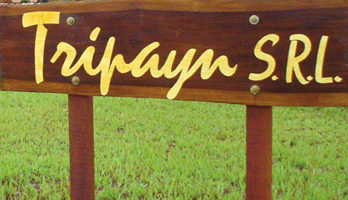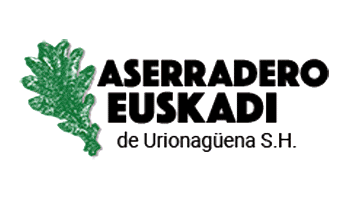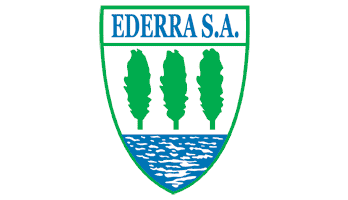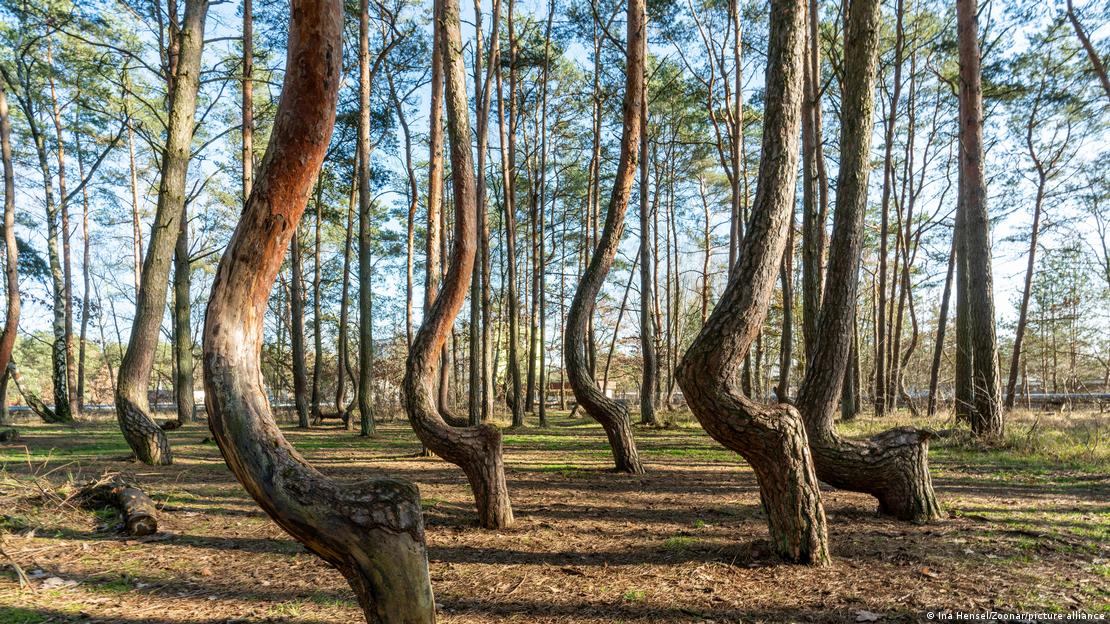
The mystery of the 400 crooked trees of the Gryfino forest
Poland's enigmatic "crooked forest" combines elements of science fiction with ecological peculiarity, as it is home to hundreds of mysteriously growing pine trees, all with identical curvatures.
In northwest Poland, in the enigmatic Krzywy Las, lies a natural phenomenon that has baffled scientists and curious people for generations. In this forest, 400 trees seemingly defy the laws of nature, growing with trunks curved at a 90-degree angle, forming an enigmatic figure that resembles the letter J. The most intriguing thing is that most of the trees point towards the North, as if they were following some ancient cosmic calling.
Although there are curved trees in other parts of the world, the quantity and orderly arrangement in this forest is unique, deepening the mystery surrounding the pine trees near the Polish town of Gryfino.
To date, there is no definitive answer to explain the strange shape of these trees, and theories range from the practical to the strange. It is estimated that they were planted in the 1930s, before Gryfino was invaded and destroyed during World War II, leading to the abandonment of the town and the loss of clues as to what may have deformed these trees, as reported by The New York Times in 2017.
Different theories about the Gryfino Crooked Forest
The theories surrounding this enigma are varied and fascinating. Some propose that the trees were buried under a heavy snowstorm during their youth, while others suggest, more incredibly, that they were crushed by Nazi tanks during the war when they were young trees. There is also the possibility, raised by some more realists, that the area's unique gravitational pull has transformed its trunks in unusual ways.
"It seems like a classic response to gravity to me," Gary Coleman, associate professor of Plant Sciences and Landscape Architecture at the University of Maryland, told the Washington Post in 2022. "As long as the stem is horizontal to gravity, the plant has a mechanism by which it can reorient itself," he added.
According to Coleman's assessment, at some point during his youth, these trees leaned horizontally.
"As you can see, the horizontal moment only occurs for a certain amount of time. It seems that it probably occurred when they were quite young seedlings or perhaps small trees, a few meters high," he explained.
Human manipulation
However, the most intriguing explanation, and perhaps the most widely accepted, is that local farmers manipulated the trees after planting them in the 1930s. These farmers are said to have hoped to use the trees to make furniture or boats with curved shapes. , so they intervened when the trees were barely 10 years old. However, World War II in 1939 may have stopped them, ultimately leaving a lasting mark on the landscape.
As to why the trees point north, the truth remains in the shadows. Dr. William Remphrey, a retired plant scientist at the University of Manitoba, interviewed by The New York Times, speculates that this orientation is simply a coincidence without deep meaning.
Although human manipulation seems a plausible explanation, the true nature of the enigma remains uncertain. In the meantime, we are left to marvel at this unusual landscape and wait patiently until someone can one day conclusively unravel the mystery of the Krzywy Las trees.
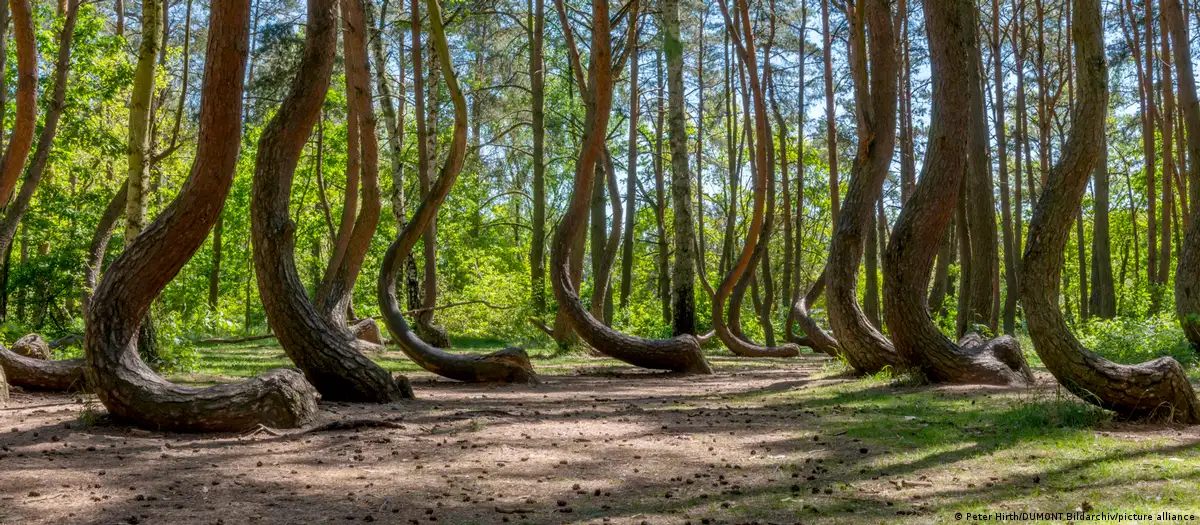

IT MAY INTEREST YOU
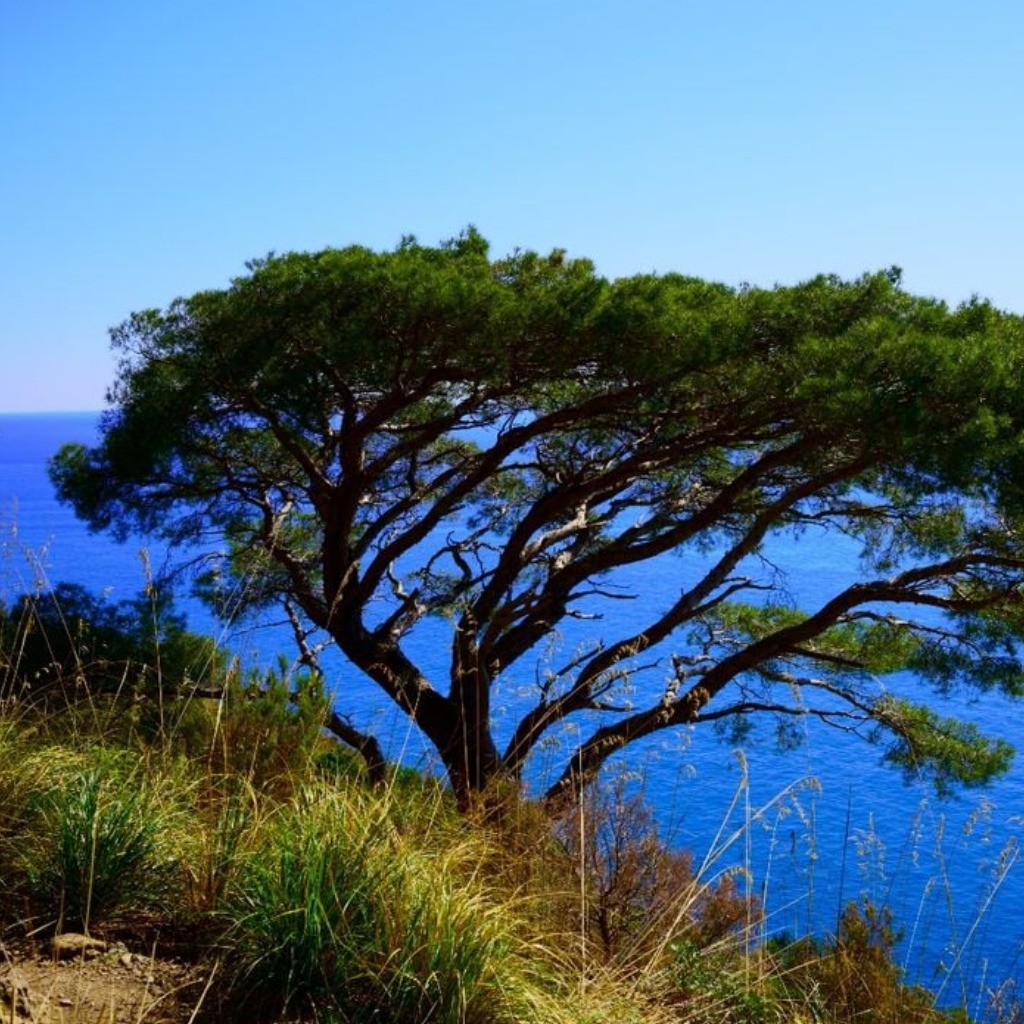 More than 20 % of land plant species are found only on islands, and the time is over to save them
More than 20 % of land plant species are found only on islands, and the time is over to save them
A new study maps the species that exist in the world and warn about the risk that inhabit those that inhabit exclusively in island territories.
 San Vicente celebrates the 39th edition of the National Wood Festival with outstanding artists
San Vicente celebrates the 39th edition of the National Wood Festival with outstanding artists
It will be from October 31 to November 3.
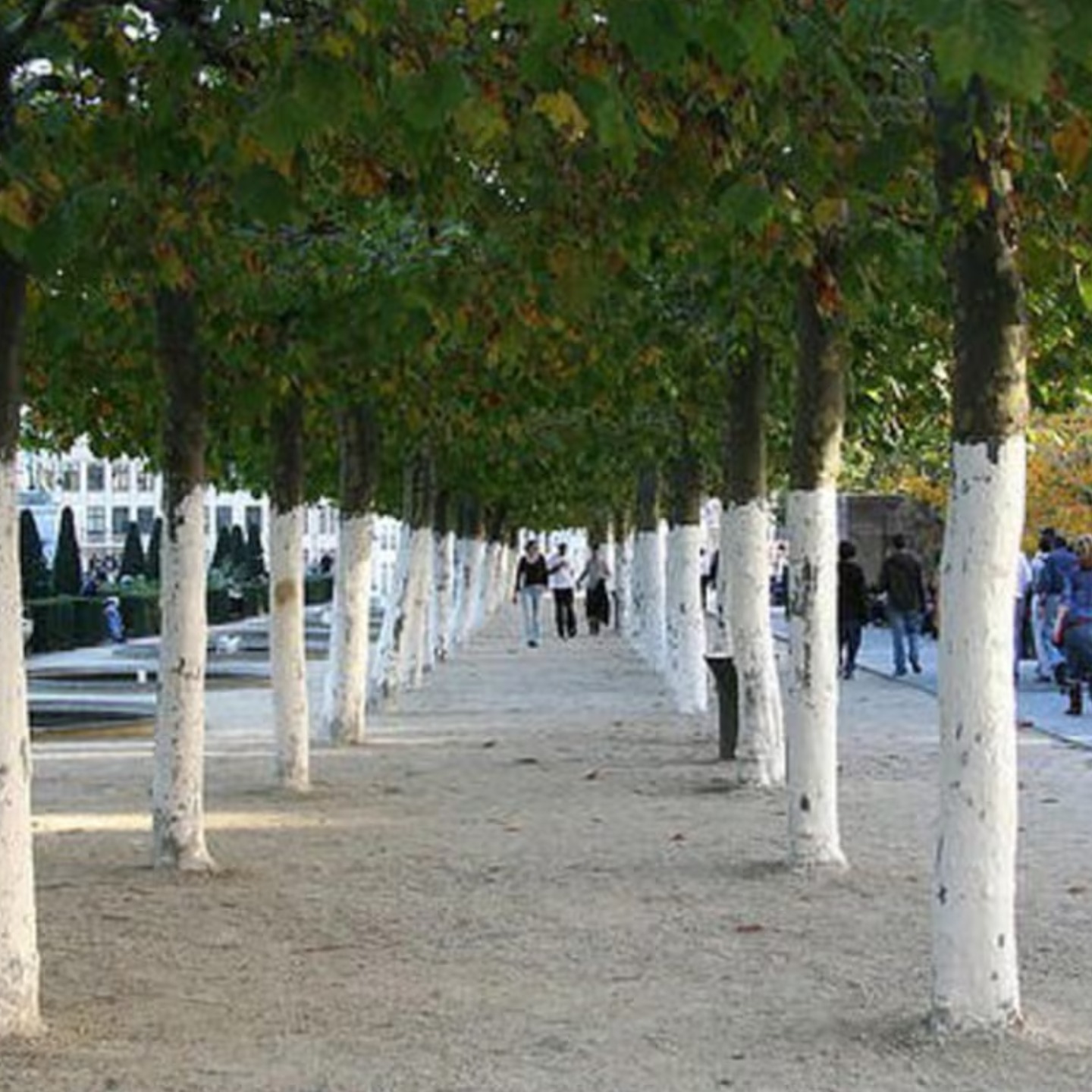 Why are the trunks of some trees white
Why are the trunks of some trees white
White or wrapped painted of tree trunks is a common practice that goes beyond aesthetics. In various places, streets and even rural areas, this technique that has specific purposes for their protection, especially those youngest or vulnerable can be observed.






